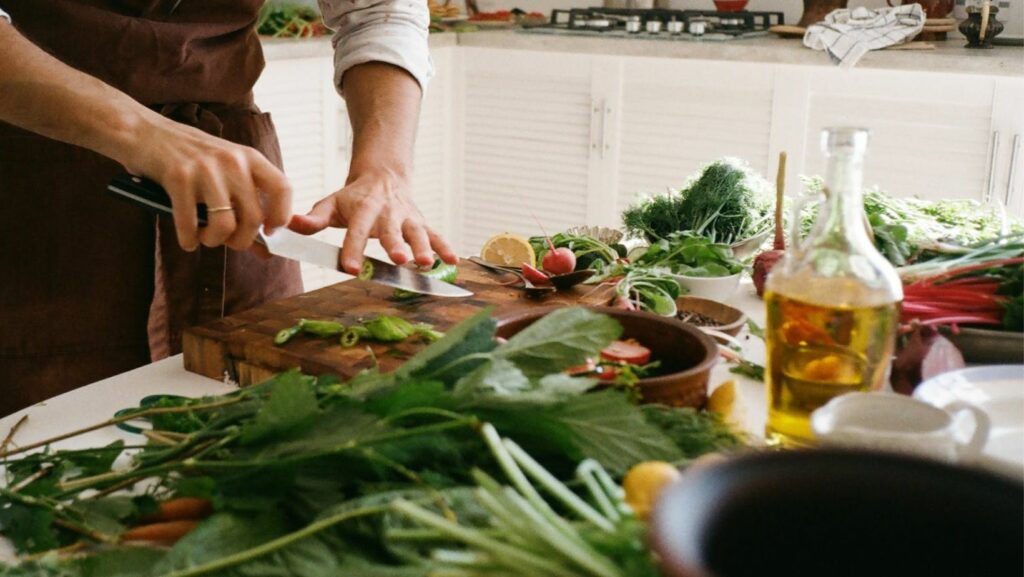
Cooking is a delightful and rewarding activity but comes with its fair share of risks. From the sizzle of hot pans to the swift slice of a knife, the kitchen can be a bustling hub of potential hazards that can happen to even the most experienced chefs.
That’s why it’s essential to be equipped with culinary skills and the knowledge of first-aid treatment. Knowing how to treat kitchen injuries promptly can significantly affect the healing process. Even worse, it can be a matter of life and death.
In this blog post, we’ll explore common kitchen injuries and provide simple and effective ways to treat them.
Cuts and Scrapes
Accidents are unwelcome guests in the kitchen, and a slip of the knife or a sudden bump into a kitchen counter can result in cuts or scrapes. The immediate response to these mishaps is crucial.
Begin by washing the wound gently with soap and water to prevent infection. Applying a sterile bandage or cloth while maintaining pressure can help stem the flow for deeper cuts or persistent bleeding.
Keeping a first aid kit handy, stocked with sterile bandages, antiseptic wipes, and adhesive strips, is also vital. However, if the cut is deep or if bleeding persists, seeking prompt medical attention is a must to ensure proper healing and reduce the risk of complications.
Burns
Burns are one of the most common kitchen injuries, often caused by hot pans, boiling water, or steam. For minor burns, run cold water over the affected area for at least 10 minutes or until the pain lessens. However, avoid using ice, as it can damage the tissue.
Once cooled, applying ointment for burns can help soothe the burn and promote healing. Cover it with a sterile, non-stick bandage to avoid any other infection. If these two aren’t available, an aloe vera gel and a clean hanky can be temporary alternatives.
However, seeking immediate medical attention is imperative for severe burns or those covering a large area. Remember, a quick and appropriate response to burns can make a significant difference in recovery and minimize the risk of long-term damage.
Choking
Choking is one of the most common first-aid incidents not only in culinary but also in hospitality. It happens when a piece of food becomes lodged in the throat. It’s a frightening scenario that it’s one of the leading causes of accidental death.
If someone is choking, quick and confident treatment is key. The basic thing to do is to encourage the choking person to cough forcefully to help them eject the blockage. While doing so, someone else should call for professional medical help.
If coughing doesn’t work, try the Heimlich maneuver. Stand behind the person, wrap your arms around their waist, and give quick upward thrusts. For individuals alone, using the back of a chair or the edge of a countertop to perform abdominal thrusts is an alternative.
Chemical Exposure
The kitchen is a culinary haven and a place where cleaning agents are regularly used. While they make the cooking area hygienic, they can sometimes cause skin irritation or burns.
Like choking, immediate action is essential in the event of chemical exposure. Rinse the affected area with plenty of water to remove the chemical. Remove any contaminated clothing and continue rinsing for at least 15 minutes.
It’s essential to understand the specific properties of the chemical involved, as some may require different treatments. Seeking medical attention is crucial, especially if the chemical is corrosive or if irritation persists.
Prevention is equally vital, so always follow safety guidelines when handling cleaning products to minimize the risk of exposure. By taking these precautions, you can safeguard yourself against potential harm and ensure a safe kitchen environment.
Falls and Sprains
Slips and falls are common in the kitchen, especially with spills and wet floors. Prevention is the first line of defense. Promptly clean up any spills and ensure the kitchen floor is dry. By being proactive in maintaining a dry and hazard-free kitchen space, you prevent injuries and create a safer environment for your culinary adventures.
In the unfortunate event of a fall, immediate action can help alleviate the impact. Rest and elevate the injured area to reduce swelling, and applying an ice pack can further aid in pain relief. If pain or swelling persists, consulting a healthcare professional for a thorough evaluation is recommended.
Final Thoughts
While the kitchen is a place of creativity and nourishment, preparing for the unexpected is crucial. By understanding how to treat common kitchen injuries promptly, we can ensure a safe and enjoyable cooking experience.
Remember, a little caution and quick action can go a long way in preventing minor mishaps from turning into major problems. Remember these simple first-aid tips, and let your culinary adventures continue confidently!













